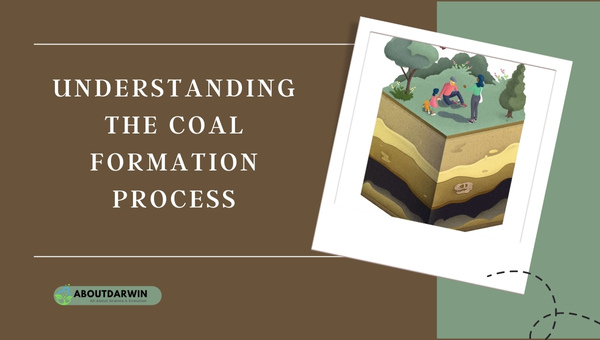Physical Address
304 North Cardinal St.
Dorchester Center, MA 02124
Coal formation is a fascinating geological process that has shaped our planet’s energy landscape over millions of years.
This natural phenomenon begins with the accumulation of plant material in swampy environments, which undergoes transformation through heat and pressure over time.
The journey from lush vegetation to the carbon-rich substance we rely on today is not just a story of decay; it’s a tale of transformation that fuels industries and powers economies. the intricacies of coal formation reveals the delicate balance of nature and the vital resources it provides.
Coal is a significant fossil fuel that has played a crucial role in human energy consumption and industrial development. Its formation is a complex geological process that spans millions of years, involving the transformation of ancient plant material under specific environmental conditions.
Understanding how coal is formed provides insight into its characteristics, types, and the historical context of its use. This process can be broken down into two main phases: peatification and coalification.
The initial stage of coal formation begins in swampy wetlands where dead plant matter accumulates. Here, the conditions are anaerobic (lacking oxygen), which prevents complete decomposition.

Instead, the organic material partially decays, forming peat, a spongy substance rich in carbon and moisture. This accumulation of peat can last for thousands of years as layers of vegetation continue to build up over time.
Coal, a vital energy resource, forms through a transformative process known as coalification. Over millions of years, organic material undergoes changes due to intense pressure and temperature, progressing through the stages of formation of coal.
This process is divided into four key stages:
Differences Between the Stages of Coal Formation:
| Stage | Carbon Content | Energy Content | Moisture Content | Color |
|---|---|---|---|---|
| Peat | Low | Low | High | Light brown |
| Lignite | Moderate | Moderate | Moderate | Brownish-black |
| Bituminous | High | High | Low | Dark black |
| Anthracite | Very high | Very high | Very low | Glossy black |
The entire process reflects Earth’s geological history, such as the Carboniferous era when vast swampy forests dominated the landscape. Each stage in coal’s formation depends on specific conditions, including temperature, pressure, and the type of plant matter involved.
By exploring the stages of formation of coal, we can better appreciate the natural processes that have made coal an enduring energy source throughout human history.
Coal formation is a complex geological process that spans millions of years, transforming organic material into fossil fuel.
This transformation occurs through stages involving the accumulation of plant debris in swampy environments, followed by burial and compaction under sediment. Over time, heat and pressure drive chemical changes, resulting in various types of coal, such as lignite, bituminous, and anthracite.
Coal formation is essential for comprehending its role in energy production and its environmental impacts, highlighting the importance of sustainable practices in energy consumption.